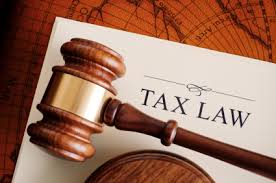A paper presented recently by two Melbourne barristers to a group of insolvency practitioners suggests that administrators, liquidators and receivers (external administrators) who do not take precautions risk personal liability for post-appointment capital gains/income tax liabilities.
Helen Symon SC is a Senior Counsel at the Victorian bar specialising in taxation and insolvency. Mark McKillop has been a junior barrister at the Victorian Bar since 2008 specialising in insolvency, banking and taxation.
Their paper, “Taxation – Common Issues for Insolvency Practitioners” (10 November 2010), looks at external administrators as viewed through the eyes of taxation legislation. The authors make three key points:
“(a) Insolvency practitioners are required to ensure that the entities to which they are appointed comply with most common tax obligations;
(b) although the entities to which they are appointed are legally separate, insolvency practitioners can be personally liable, under some circumstances, for the payment of post appointment tax liabilities of the insolvent entity: income tax, capital gains tax, PAYG collections and GST;
(c) choice of the type of appointment may affect the practitioner’s personal liability to pay capital gains tax liabilities of the appointee and, accordingly, the assets available to the secured creditor.”
Personal Liability under Taxation Law
In the debate so far the most troublesome law for external administrators has been Section 254 of the Income Tax Assessment Act 1936 (ITAA 1936), which deals with agents and “trustees”, and raises the prospect that, as an agent or “trustee”, a external administrator may be personal liable for a company debt.
Section 254(1)(d) states that every “trustee”, as defined in ITAA 1936 (*), and every agent is “hereby authorized and required to retain from time to time out of any money which comes to him in his representative capacity so much as is sufficient to pay tax which is or will become due in respect of the income, profits or gains.
Section 254(1)(e) states that every “trustee”, as defined in ITAA 1936, and every agent is “hereby made personally liable for the tax payable in respect of the income, profits or gains to the extent of any amount that he has retained, or should have retained, under paragraph (d); but he shall not be otherwise personally liable for the tax.
According to Helen Symon SC and Mark McKillop, “Section 254, then, preserves the position of the Revenue vis a vis tax liabilities which arise following appointment of a liquidator, receiver or administrator …. Casting personal liability on the liquidator or receiver or administrator ensures the tax liabilities are met before funds are applied to satisfy creditors.”
Personal Liability under Other Laws
Helen Symon SC and Mark McKillop also refer to instances where personal liability may arise outside the income tax legislation.
In this context they refer to the case of Deputy Commissioner of Taxation v Tideturn Pty Ltd (In Liquidation) [2001] NSWSC 217 (26/3/2001). This case concerned a liquidator who kept the business of the company going after he was appointed and, in the process, deducted income tax instalments (group tax) from the post appointment wages of the employees. The court held that the group tax deductions gave rise to a post liquidation debt payable in the liquidation as a priority payment under Section 556(1)(a) of the Corporations Law, as an expense properly incurred by the liquidator in carrying on the company’s business.
The liquidator failed to pay any of the group tax, but paid other priority debts. By failing to ensure that priority debts were paid proportionately in the circumstances of there being insufficient funds available (as is required by section 559 of the Corporations Law) the Court stated that this “would be a breach of duty by the liquidator”. For this breach of duty the court ordered that “The liquidator must pay personally the sum of $75,000”, which was the group tax debt discounted for certain mitigating circumstances. (**)
Other interesting judicial comments on “expenses properly incurred by a liquidator in carrying on the company’s business” and liability for breach of duty in not paying post appointment debts include:
- Ansett Australia Ground Staff Superannuation Plan Pty Ltd v Ansett Australia Ltd and Others [2002] VSC 576 (20/12/2002);
- Bell v Amberday [2001] NSWSC 558 (4/7/2001); and
- Charlie Pace & Anor v Antlers Pty Ltd (In liq) [1998] FCA 2 (12/1/1998).
Conclusion
Helen Symon SC and Mark McKillop conclude their paper with the following warning:
“Practitioners need to be aware that, in effect, they will be liable either directly or under penalty provisions for CGT, income tax and GST applying to the entity to which they are appointed. They are also required to ensure that administrative requirements, such as filing returns, are completed. Accordingly, prudent practice requires withholding sufficient funds to cover the liabilities until they are paid.”
——————————————————————————————————————–
Note: The profile and contact details of Helen Symon SC are available at http://www.vicbar.com.au/find-a-barrister/advanced-search/search-results/barrister-profile?RollNumber=1884. Mark McKillop’s profile and contact details are at http://www.vicbar.com.au/find-a-barrister/advanced-search/search-results/barrister-profile?RollNumber=4135
—————————————————————————————————————–
ADDITIONAL NOTES:
(*) A “trustee” for taxation purposes is defined in Section 6(1) of the ITAA 1936 [and ITAA 1997] as: “in addition to every person appointed or constituted trustee by act of parties, by order, or declaration of a court, or by operation of the law, includes –
(a) an executor or administrator or, guardian, committee, receiver, or liquidator; and
(b) every person having or taking upon himself the administration or control of income affected by any express or implied trust, or acting in any fiduciary capacity, or having the possession control or management of the income of a person under any legal or other disability.”
———————————————————————————–
(**) It is worth noting also, that as a result of his behaviour in this external administration – including his failure to pay all the expenses incurred in carrying on the business of the company after his appointment – the liquidator (William Edward Andrew) was brought before the Companies Auditors and Liquidators Disciplinary Board (CALDB) in 2001 and was persuaded to cease acting as a liquidator. (See ASIC Media Release 01/312 at http://www.asic.gov.au/asic/asic.nsf/byheadline/01%2F312+Time+limit+imposed+on+liquidator’s+registration?opendocument#. )
———————————————————————————–
(***) For my previous posts on this subject see “Post-appointment income tax debts of liquidator” and “Taxing capital gains made during liquidation.”
The comments and materials contained on this blog are for general information purposes only and are subject to the disclaimer.



